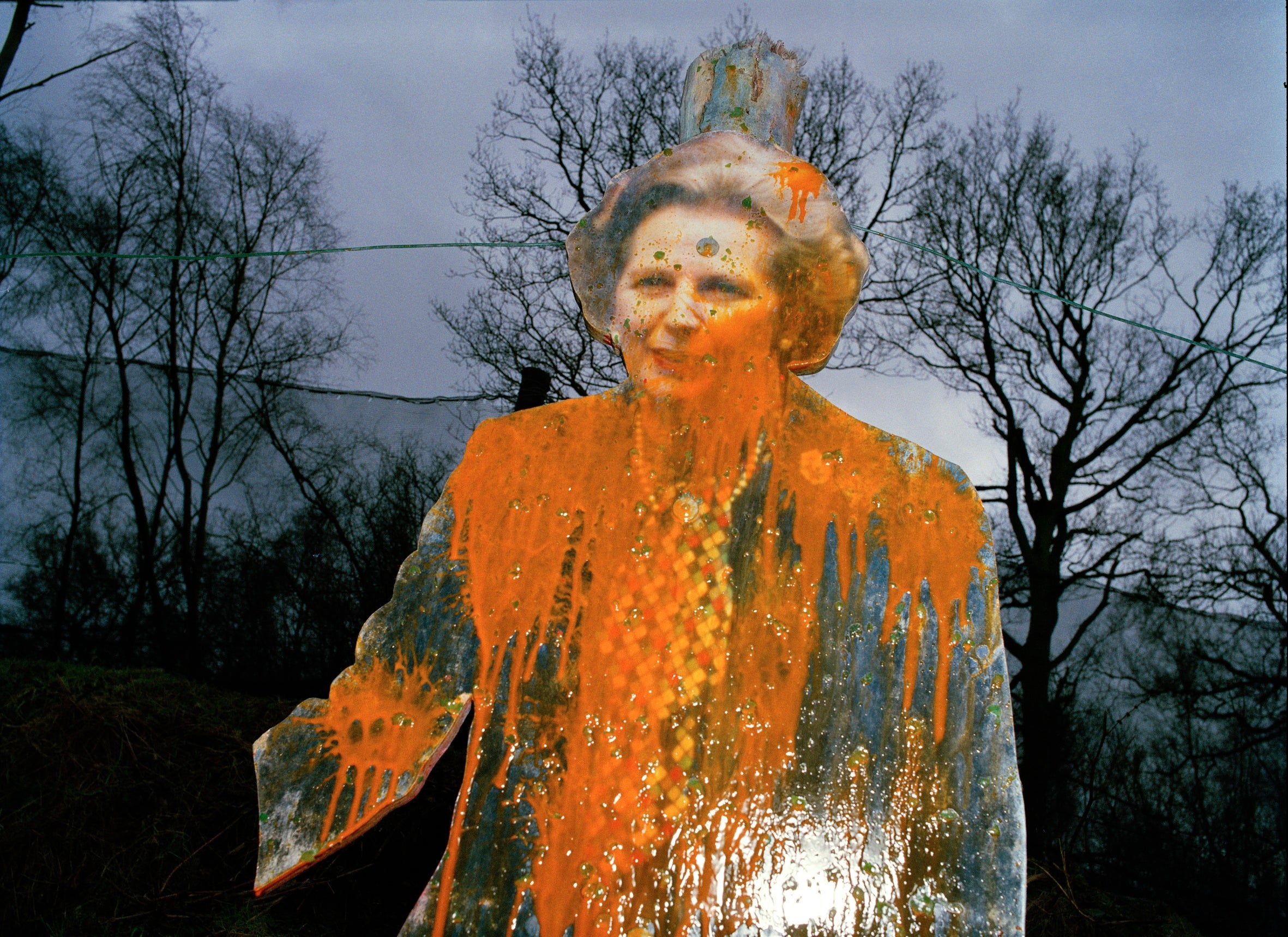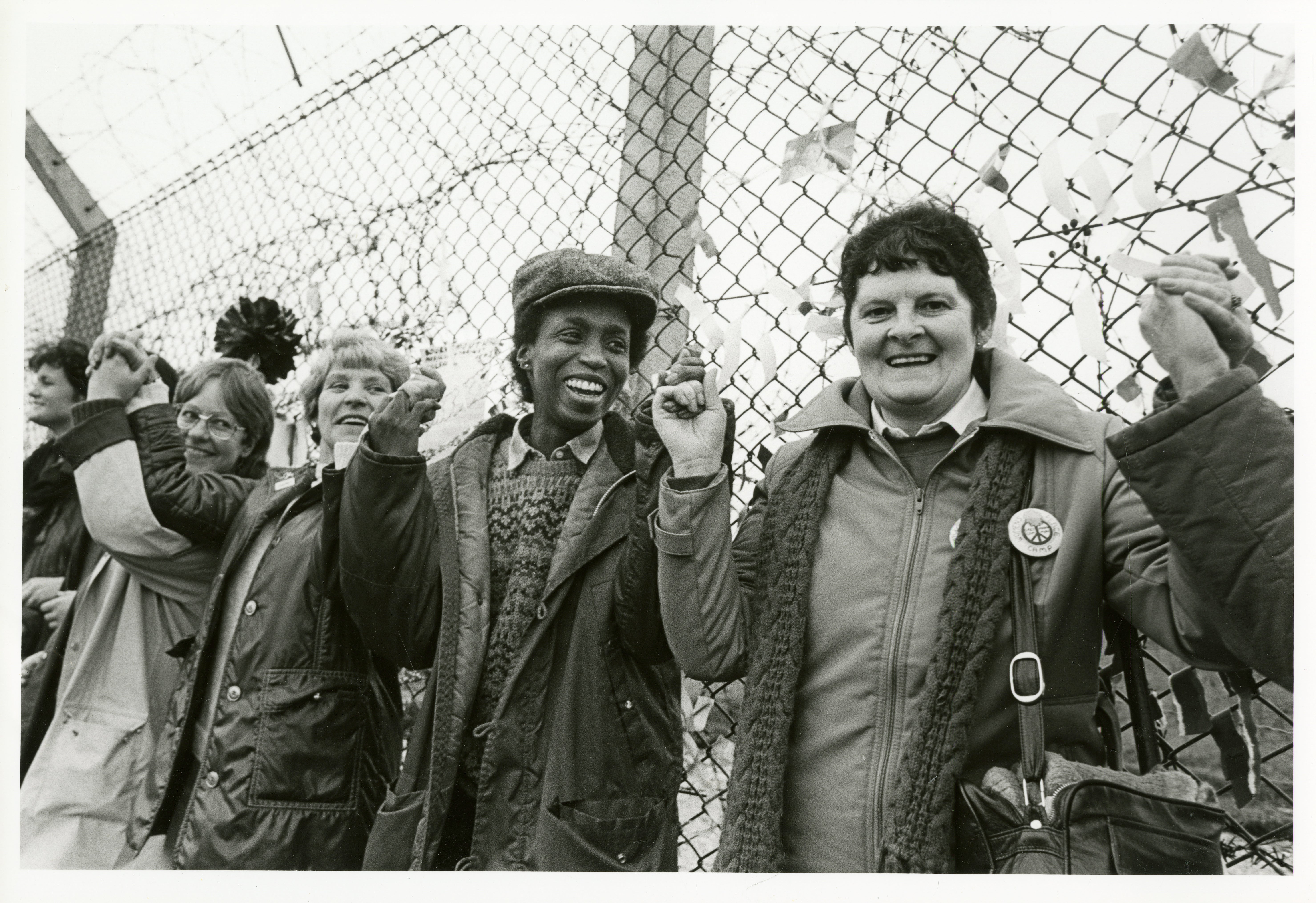It’s the gritty Eighties versus the glossy Eighties in Tate Britain’s queasily nostalgic photography show
Protest, poverty and privilege – a photography exhibition at Tate Britain offers an exciting, if partial, view of a decade that still remains highly polarising

The myth of the Eighties as a combustible era of economic growth and social unrest was being framed even as the decade was beginning. In one direction you had Thatcher, yuppies, boom and bust, the dawn of the digital; in the other, epic strikes, inner-city riots and unprecedented activism across feminism, gay and civil rights. This exuberant exhibition on artists’ photographic responses to that still polarising decade focuses almost exclusively on the gritty, oppositional Eighties. Through most of the 11 densely-packed rooms you’d barely be aware that the glossy, aspirational Eighties were even taking place. It makes for an often exciting – but very partial – view of the time.
Fascists and lefties were battling it out on the streets of the East End, while the brutally abrupt shift from manufacturing to service industries created worse poverty and unemployment than the supposedly grim Seventies. This meant that the early Eighties in particular gave a weird sense of a society being thrown into an unknown technocratic future while harking back to the social polarisation of the interwar Depression years. It’s something made very apparent in the exhibition’s first room, which positively explodes with vivid images of the great street battles of the time: the miners’ strike of 1984-5, the Anti-Nazi League, Brixton riots, Grunwick picket, the HIV and Section 28 protests.
If the show’s aim is to demonstrate how Eighties photography expanded the language of the medium, this is classic documentary-photography – at a very high level, but hardly game-changing. If you half close your eyes you could in many instances be looking at scenes from the Thirties. The fact that the scenes of surging riot police and jubilant protestors start to roll into one emphasises the sense of a common struggle. But often it’s the scenes on the margins that stick in the mind: punks enthusiastically kissing as police surround a burning building, a pair of bewildered Japanese tourists clutching their HMV shop carrier bags in the middle of the mayhem, snapped by David Hoffman and Melanie Friend, respectively, during the 1990 poll tax riots.
The shift from black and white to colour, in a room exploring the decade’s rapidly expanding extremes in wealth and poverty, brings a very different feel. Paul Graham’s brilliant images of DHSS waiting rooms focus as much on the empty spaces as the endlessly patient claimants, bringing an abstract, almost painterly quality to the bleak subject. Martin Parr’s subtly caustic views of Tory election parties and public school open days offer some of the show’s very few images of upper-middle-class people, and as so often with Parr’s brilliantly lit social tableaux there’s a sense of inverted snobbery that lacks real depth.
A similar sense of talking down to the viewer pervades the more conceptual photography, much of which incorporates texts that make the artists’ political agendas all too obvious. Victor Burgin’s views of suburban streets, posh gardens and supposedly desolate bus queues are accompanied by fictional comments by and on members of a distant privileged elite who, it is implied, really control what’s happening in Britain – though these counterpointing narratives aren’t quite as clever as the late conceptualist intended.
If the Feminist photography lacks the raucous humour of Tate Britain’s recent Women in Revolt! show, there is at least the sense of important aesthetic boundaries being crossed. Maude Sulter’s Zabat (1989) series of large format portraits of Black women cultural activists embodying the Ancient Greek muses in the roles of under-celebrated women from history, appears way ahead of its time. It’s exactly the kind of thing that cutting-edge artists have been producing over the last few years.
That so much of the work here was rooted in social activism, with artists working in collectives and strongly embedded in communities, creates an inevitable emphasis on documentary. The artists clearly wanted their images to be immediately comprehensible to the people they were representing and to the population at large. The urge of young Black photographers to show their communities as they actually were, at a time when the notion of Black Britain was just coming into being, produced marvellously evocative and technically masterful imagery, from Vanley Burke’s documentation of sound systems in the Handsworth area of Birmingham to Mumtaz Karimjee’s work with the proud and political Asian women of Southall.
But the images that feel most revealing of that time, and most connect it with ours, come in the last sections, which contain some of the most taboo-busting gay photography, starting with the wildly homoerotic imagery of Rotimi Fani-Kayode and Ajamu X. They’re a reminder that the Eighties weren’t only a time when it was fashionable to “come out” even if you were barely gay, but when British society as a whole came out on a kind of cosmic-existential level – when classic British reserve went out the window.

Grace Lau’s bright colour images of cross-dressers of both sexes in their sitting rooms and other personal locations feel notable less for their subjects’ appearances, but for the way they choose to be identified with their private domestic spaces, rather than their public actions. If that feels par for the course in today’s Grand Designs, interiors-obsessed world, it felt novel then. Franklyn Rodgers’ pictures of clubbers show people of all persuasions and heritages rampantly strutting their stuff for the camera: performing their lives and roles in a time when reality TV was still a decade off, but its shameless spirit was already abroad.

Finally, Jason Evans and Simon Foxton’s images from i-D magazine of young Black men posing dressed to the nines in suburban streets suggest that the decade’s aspirational glamour could be turned into a form of street-level resistance by anyone with a strong enough sense of personal style.
While the texts and catalogue make much of the impact of style magazines such as i-D and The Face, both launched in 1980 – and a few copies are displayed in a cabinet – I’d have liked to have seen more of that kind of imagery, and more of a sense of the other side of the Eighties. Didn’t the interface of Big Money, youthful pizazz and the rampant cynicism of the time produce even one image worthy of being shown here? There must have been more people like those street dandies in i-D who were using the over-the-topness of the monetarist area for their own subversive purposes, rather than simply turning their back on it. Damien Hirst was one such, but that spirit is only tangentially felt in the photography here.
Still, this is a highly atmospheric exhibition. As someone who can remember much of the context in painful clarity, I was caught between wanting to linger and bask in a glow of slightly queasy nostalgia and rushing for the exit to reassure myself it is still 2024 out there.
‘The 80s: Photographing Britain’ is at Tate Britain from 21 November to 5 May, 2025




Join our commenting forum
Join thought-provoking conversations, follow other Independent readers and see their replies
Comments